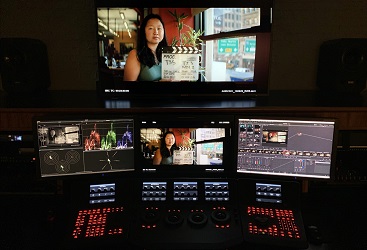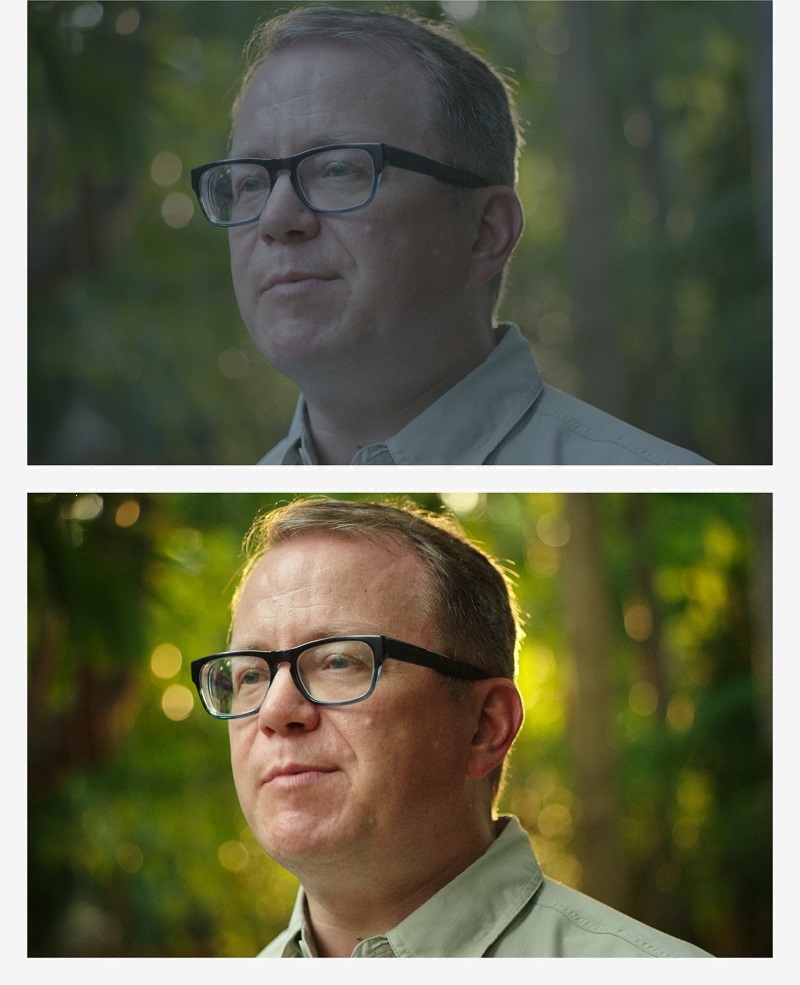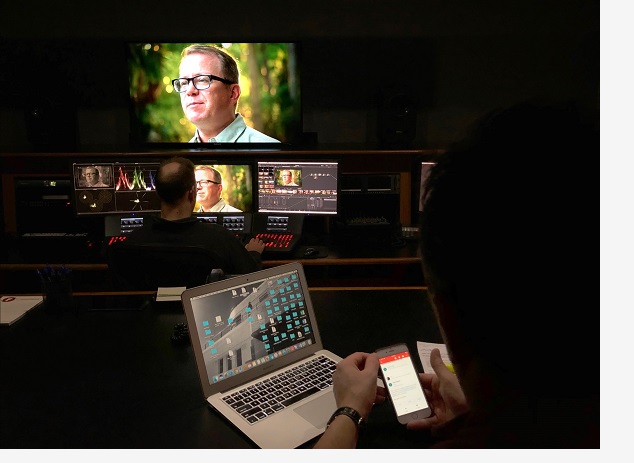Color Correction—Everyday Artistry

Color correction has always been a very specialized and specific task in the post-production process. It’s one of the final steps in completing the long journey that is commercial advertising. Ten to fifteen years ago, color correction was a secretive art. Fast forward to today—nearly everyone has color correction capabilities. However, some of the mysteries remain within the craft itself.
Color correction is akin to mastering a musical instrument; it requires a lot of practice. Many in-house producers are tasked with multiple responsibilities along the production to post-production timeline. By parceling out color correction to an experienced colorist, a producer can realize both resource management advantages and an elevation in the visual quality of the deliverable.
A scenario that I frequently encounter is footage acquired from multiple sources. Different cameras recording the same event in slightly different ways often create a consistency and continuity problem. The footage should flow from one shot to the next with no discernible change. By working with the specific nuances of the footage and the camera, a colorist can focus on matching the material so the transition between the cameras is seamless. Often, it’s as simple as matching skin tone or surrounding environments. But it’s easier said than done. Matching shots requires a combination of properly balanced shadows, mid-tones, and highlights to achieve the desired outcome. Lesser quality cameras can present quite a challenge, as well. (Go Pro type cameras generally provide a little less information to work with.) Maximizing that information in the color suite is the key to matching inconsistencies.
 Today’s footage can arrive in the edit looking very flat. Concerning at first, but rest assured, it’s a good thing. Flat acquisition allows for the maximum range of colors possible. In order to make the footage more appealing, many in-house editors use a “Look up Table” (LUT). A LUT is like simple math—it tells color X to look like color Y. That’s it. And while this may be helpful to make your footage look presentable during the edit, LUTs pay no attention to anything else. Edit style/placement of cuts, shifts in lighting during the filming, and aggressive color looks can all be extremely detrimental when using LUTs. But an experienced colorist could easily iron out all of the issues that a LUT could not. A colorist is a talented artist, not an algorithm. Their skillset and creative aesthetic all come in to play to maximize the full potential of the footage in a way that a simple mathematical transformation could not.
Today’s footage can arrive in the edit looking very flat. Concerning at first, but rest assured, it’s a good thing. Flat acquisition allows for the maximum range of colors possible. In order to make the footage more appealing, many in-house editors use a “Look up Table” (LUT). A LUT is like simple math—it tells color X to look like color Y. That’s it. And while this may be helpful to make your footage look presentable during the edit, LUTs pay no attention to anything else. Edit style/placement of cuts, shifts in lighting during the filming, and aggressive color looks can all be extremely detrimental when using LUTs. But an experienced colorist could easily iron out all of the issues that a LUT could not. A colorist is a talented artist, not an algorithm. Their skillset and creative aesthetic all come in to play to maximize the full potential of the footage in a way that a simple mathematical transformation could not.
Ulti mately there are numerous factors that professional colorists can bring to the table, but the biggest one is experience—knowing when to utilize outside-the-box solutions and creative approaches. Or simply knowing when the shot is completed and looks good. Pencils down, move on to the conform and mix—services that can be packaged within the same facility at Finish Post and Soundtrack.
mately there are numerous factors that professional colorists can bring to the table, but the biggest one is experience—knowing when to utilize outside-the-box solutions and creative approaches. Or simply knowing when the shot is completed and looks good. Pencils down, move on to the conform and mix—services that can be packaged within the same facility at Finish Post and Soundtrack.
Please call or email Bret Upham at Finish Post in Boston; bret@finishpost.com, 617-292-0082 to discuss affordable color grade and conform services that will elevate the look of your next project.
- advertising,
- agency,
- artistry,
- association,
- bessette,
- brand,
- boston,
- camera,
- client,
- CMO,
- color correction,
- colorist,
- content,
- corporate,
- creative,
- digital,
- finish post,
- IHAF,
- in-house,
- insource,
- internal,
- leadership,
- LUT,
- management,
- marketing,
- media,
- membership,
- networking,
- professional,
- social,
- talent,
- transformation,
- trends
Recent Posts

In-House Data: Fact or Fiction?
October 16, 2023
I’m going to be honest with you, which I always am but this time it’s scary honesty. There are a lot of in-house agency research reports out there. And not all of them contain data that are close to the integrity of the studies IHAF publishes—the next of which drops at the IHAF conference on …

IHAF Wrapped
December 20, 2023
One of our favorite things to do at year-end is look back at the events, presentations, and online resources our members tapped most. (Why should Spotify have all the fun?) Here are a few of your favorites in 2023:
• New Assortment of Org Charts Download • Updated Job Profiles …



















%20(1).pdf%20-%20Copy.jpg)

%20(1).png)


No Reader Comments